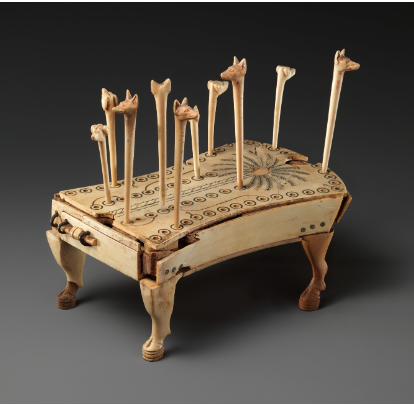In the shadows of the pyramids and along the banks of the sacred Nile, a game emerged that would transcend the sands of time—an ancient board game known as Hounds and Jackals. Discovered in the tombs of pharaohs and nobles, this intriguing pastime offers a captivating journey through the annals of ancient Egyptian history. Let us delve into the history of Hounds and Jackals, unraveling the mysteries of its origins and the cultural tapestry it wove across millennia.
Origins and Discovery:
- Middle Kingdom Egypt (c. 2000–1800 BCE):
- Hounds and Jackals, also referred to as the “Game of 58 Holes,” originated during the Middle Kingdom period of ancient Egypt. This era witnessed the flourishing of art, culture, and intellectual pursuits.
- Archaeological Rediscovery:
- The modern world first encountered Hounds and Jackals in the late 19th and early 20th centuries through archaeological discoveries. Tombs, including those of pharaohs and elite individuals, revealed beautifully crafted boards and game pieces.
Board Design and Symbolism:
- Distinctive Board Layout:
- The Hounds and Jackals board features 29 holes arranged in a unique pattern. A central row, often interpreted as representing the Nile, divides the board into two halves, each adorned with stylized figurines of hounds and jackals.
- Symbolic Significance:
- The symbolic nature of the game remains a subject of scholarly debate. The presence of animal figurines and the central row may suggest themes related to journey and possibly the afterlife, aligning with ancient Egyptian beliefs.
Cultural Significance:
- Elite and Commoner Appeal:
- Hounds and Jackals was not confined to the tombs of pharaohs; it found its place in the tombs of commoners as well. This broad appeal indicates that the game was enjoyed across different social strata in ancient Egyptian society.
- Tombs as Gaming Spaces:
- The inclusion of Hounds and Jackals in burial sites suggests a belief in the game’s importance in the afterlife. Tombs were not merely resting places for the deceased but spaces where one’s journey continued, potentially mirrored in the gameplay itself.
Gameplay and Strategy:
- Strategic Engagement:
- Hounds and Jackals involves strategic movement of pieces along the holes of the board. Players navigate the central row and seek to reach the last row on the opponent’s side, all while aiming to capture the opponent’s pieces.
- Casting Sticks and Dice:
- The game relies on the throw of casting sticks or dice to determine the number of spaces a player can advance. This combination of chance and strategy adds depth to the gameplay.
Legacy and Modern Rediscovery:
- Modern Enthusiasm:
- Hounds and Jackals has experienced a modern resurgence. Enthusiasts and historians have reconstructed the game based on archaeological findings, and replicas allow contemporary players to experience the ancient challenge.
- Preserving an Ancient Legacy:
- As the sands of time continue to shift, Hounds and Jackals stands as a testament to the enduring appeal of ancient pastimes. Its history, intricacies, and cultural resonance persist, offering a bridge between the modern world and the captivating civilization of ancient Egypt.
As we trace the footsteps of Hounds and Jackals through the corridors of ancient Egyptian history, we find not just a game but a cultural artifact that transcends millennia. From the hands of pharaohs to the rediscovery by archaeologists, Hounds and Jackals invites us to partake in the strategic dance that once resonated along the banks of the Nile, echoing the intellectual pursuits and leisurely moments of a civilization that left an indelible mark on the world. Egyptian board game

